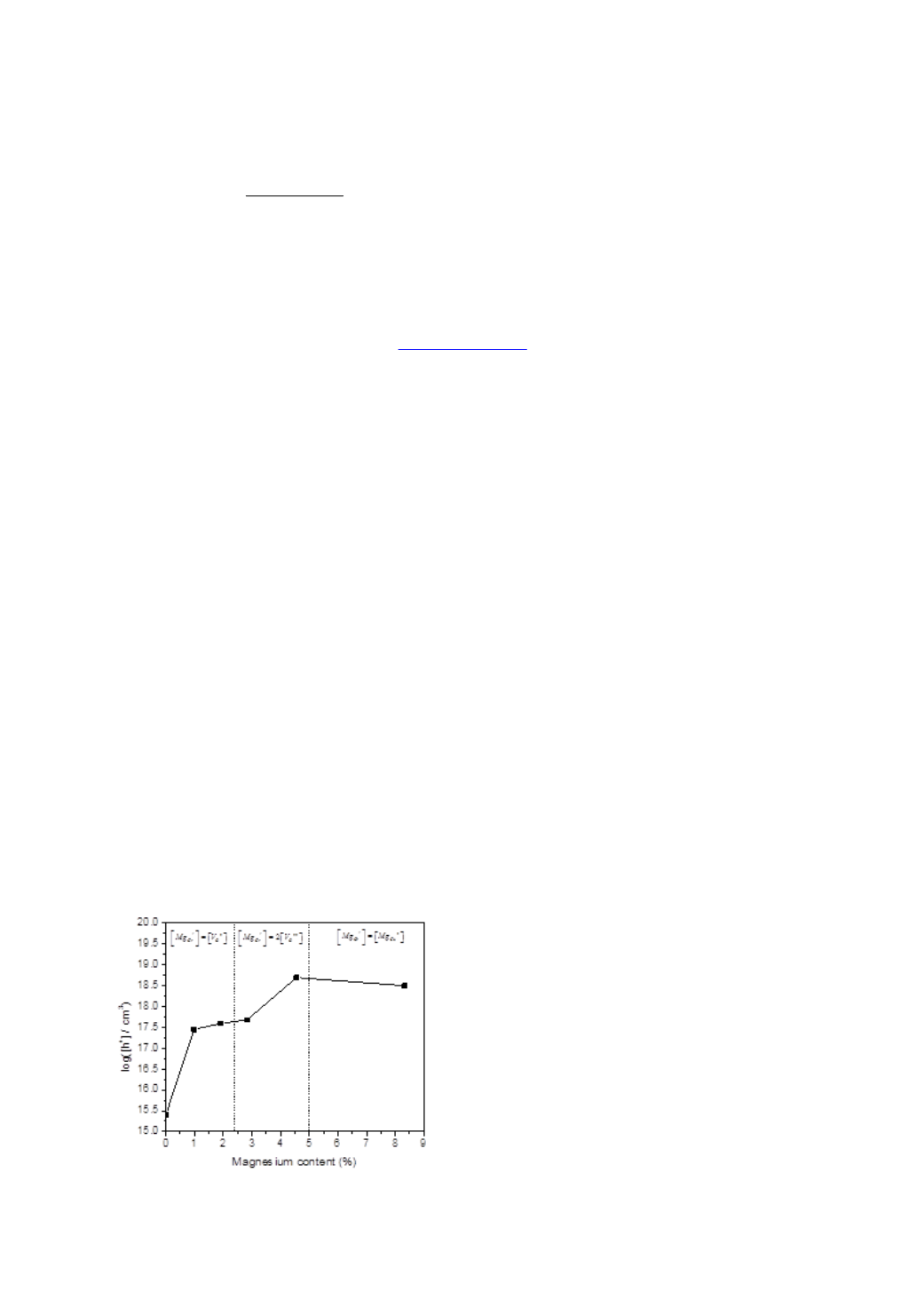
Thermodynamic analyses of point and impurity defect concentrational equilibrium in
Cu(I)M(III)O2 materials
T. Tchelidze
1
, E. Chikoidze
2
, M. Boshta
3
, D. Daraselia
1
, D. Japaridze
1
, A. Shengelaya
1
,
Y. Dumont
2
, M. Neumann-Spallart
2
1
Department of Physics, Faculty of Exact and Natural Sciences Ivane Javakhishvili Tbilisi State University,
Chavchavadze 3, 0128 Tbilisi, Georgia
2
Groupe d’Étude de la Matière Condensée, CNRS/Université de Versailles/Université Paris-Saclay, 45, av. des
États-Unis, 78035, Versailles, France
3
Solid State Physics Department, National Research Center, El-Behooth St., 12311 Dokki, Giza, Egypt
In the present work we provide the thermodynamic analysis of
Cu
M
III
O
2
(crystal):acceptor impurity-O
2
(gas)
and pure
Cu
M
III
O
2
(crystal)–O
2
(gas) systems in
order to define the dependence of concentrations of dominant point defects, impurity spices
and charge carriers on temperature, oxygen partial pressure in the surrounding atmosphere
and impurity concentration. The calculation is carried out on the example of CuCrO
2
. The
analysis is made by the Kroger method of quasi-chemical equations. In this method creation
of dominant defects and charge carriers are written as chemical reactions. The corresponding
mass action laws, together with the electroneutrality condition and impurity mass balance
equation, give a system of equations for the concentrations of the main charged species
(intrinsic and impurity acceptor and donor defects, electrons and holes) existing in the crystal.
For undoped CuCrO
2
material calculations are carried out for fixed (t=900
0
C)
treatment temperature and dependence of concentrations on oxygen partial pressure is
obtained. According to calculation oxygen pressure at which the concentration of holes and
intrinsic acceptors become dominant, is quite high. However, weak hole conductivity is
expected in the region of compensation.
For Mg doped samples concentration of charge carriers and impurity and intrinsic
defects are calculated versus magnesium content for neutral atmosphere. It is assumed that at
low magnesium concentration, magnesium atoms are incorporated only in chromium sites
and they are mainly compensated by one-charged oxygen vacancy; with increasing
magnesium content substitutional magnesium is compensated by double-charged oxygen
vacancy, and at high magnesium content impurity self-compensation takes place. Such a
compensation scheme well reproduces experimental results (
E. Chikoidze, M. Boshta, T.
Tchelidze, D. Daraselia, D. Japaridze, A. Shengelaya, Y.Dumont, M. Neumann-Spallart,
2016
). Figure bellow represents the calculated dependence of hole
concentration on magnesium content.
Figure 1. Calculated carrier
concentration dependence on the
Mg atomic concentration
PS1 23
-179-


